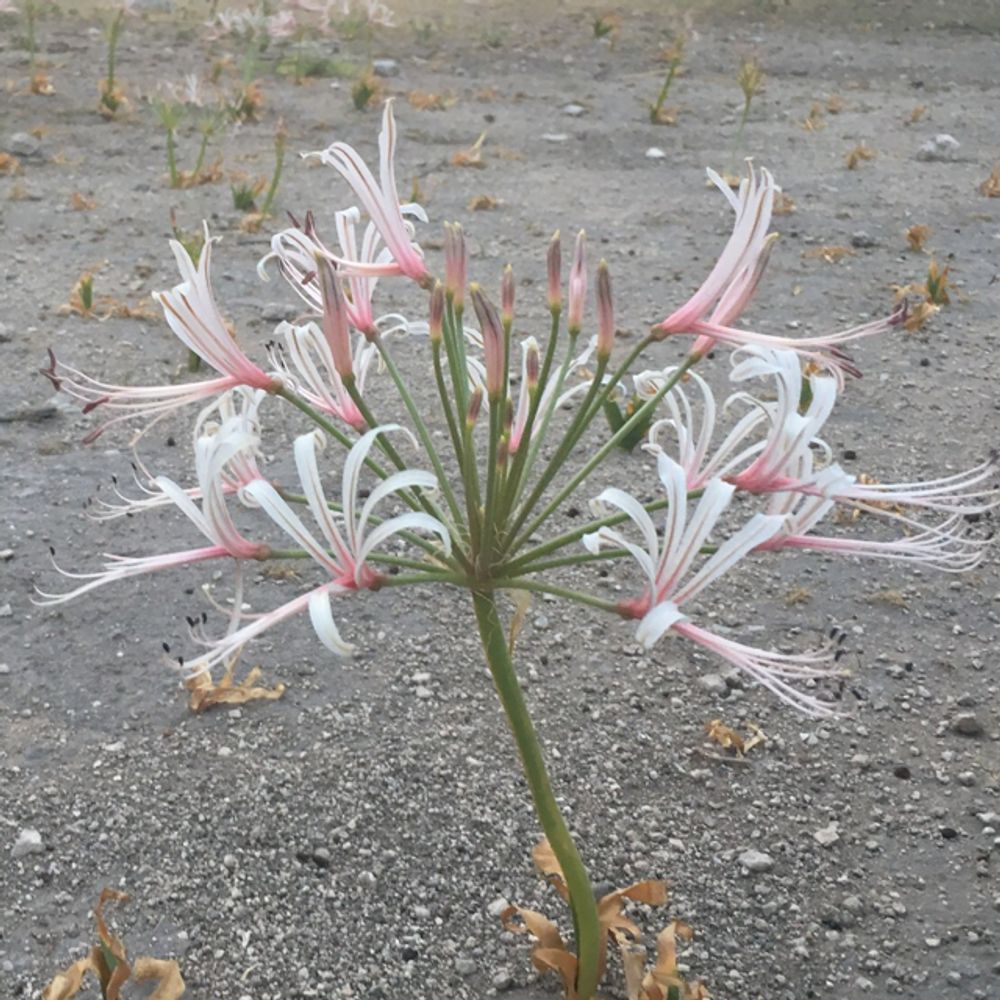Lycoris
(Lycoris)

Description
Lycoris is a genus of bulbous plants native to East Asia, including China, Korea, and Japan. They are commonly known as surprise lilies or spider lilies due to their unusual growth habit, which involves producing foliage in the spring and then going dormant until fall, when they suddenly sprout flowers on naked stems. There are around 20 species of Lycoris, but the most commonly cultivated ones are L. radiata, L. squamigera, and L. aurea. In this article, we will take a closer look at these species and their characteristics. Lycoris radiata L. radiata, also known as red spider lily or higanbana, is perhaps the most iconic of all Lycoris species. It is a perennial bulb that can grow up to 60 cm tall and produces bright red flowers in late summer or early fall. The flowers are star-shaped and have six petals, with long stamens that give them a spidery appearance. The foliage of L. radiata emerges in the spring, usually in March or April, and consists of strap-like leaves that can reach up to 60 cm long. After a few months, the leaves die back, and the bulb goes dormant until the following year. L. radiata is very easy to grow and is tolerant of a wide range of soil types and moisture levels. It prefers full sun or partial shade and can be planted in the garden or in containers. The bulbs should be planted in the fall, at a depth of around 10 cm, and should be watered regularly until they go dormant. Lycoris squamigera L. squamigera, also known as resurrection lily or surprise lily, is another popular Lycoris species. It is a bit taller than L. radiata, growing up to 90 cm tall, and produces large clusters of pink, fragrant flowers in late summer or early fall. The flowers have six petals and are trumpet-shaped, with a long tube that opens into a wide, flaring mouth. Like L. radiata, L. squamigera produces foliage in the spring that dies back in early summer, leaving the bulb dormant until fall. However, the foliage of L. squamigera is quite different from that of L. radiata. It consists of broad, strappy leaves that can reach up to 90 cm long and are arranged in a fan shape. L. squamigera is also easy to grow and is tolerant of a wide range of soil types and moisture levels. It prefers full sun or partial shade and can be planted in the garden or in containers. The bulbs should be planted in the fall, at a depth of around 15 cm, and should be watered regularly until they go dormant. Lycoris aurea L. aurea, also known as golden spider lily, is a less commonly cultivated Lycoris species. It is a bit smaller than L. radiata and L. squamigera, growing up to 45 cm tall, and produces yellow or golden flowers in late summer or early fall. The flowers have six petals and are star-shaped, with long stamens that give them a spidery appearance. The foliage of L. aurea is similar to that of L. radiata, consisting of strap-like leaves that emerge in the spring and die back in early summer. However, the leaves of L. aurea are a bit narrower and more delicate than those of L. radiata. L. aurea is also easy to grow and is tolerant of a wide range of soil types and moisture levels. It prefers full sun or partial shade and can be planted in the garden or home.
Taxonomic tree:







